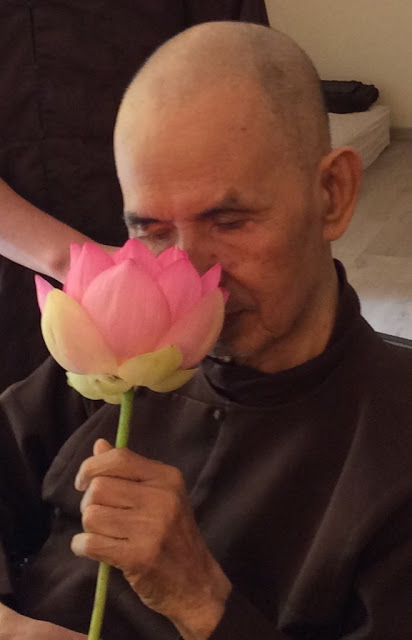The followings are Thay's method of contemplating a loved one who has died and of contemplating compassion for the person you hate or despise the most.
(A loved one who has died)
On a chair or bed, sit or lie in a position you feel comfortable in. Begin to take hold of your breath. Contemplate the body of a loved one who has died, whether a few months or several years ago. Know clearly that all the flesh of the person has decomposed and only a skeleton remains lying quietly beneath the earth. Know clearly that your own flesh is still here and in yourself are still converged the five aggregates of bodily form, feeling, perception, mental functionings, and consciousness. Think of your interaction with that person in the past and right now. Maintain the half smile and take hold of your breath. Contemplate this way for 15 minutes.
(Compassion for the person you hate or despise the most)
Sit quietly. Breathe and smile the half smile. Contemplate the image of the person who has caused you the most suffering. Regard the features you hate or despise the most or find the most repulsive. Try to examine what makes this person happy and what causes suffering in his daily life. Contemplate the person's perceptions; try to see what patterns of thought and reason this person follows. Examine what motivates this person's hopes and actions. Finally consider the person's consciousness. See whether his views and insights are open and free or not, and whether or not he has been influenced by any prejudices, narrow-mindedness, hatred, or anger. See whether or not he is master of himself. Continue until you feel compassion rise in your heart like a well filling with fresh water and your anger and resentment disappear. Practice this exercise many times on the same person.(Excerpted from Thich Nhat Hanh’s “The Miracle of Mindfulness”)
(My commentary)
If we look deeply, we can touch the true nature of reality and understand the root cause. And through that insight and compassion, we can liberate ourselves. The key is mindfulness, concentration and insight. Thay's contemplation method is very useful and deep.
Thích Nhất Hạnh










